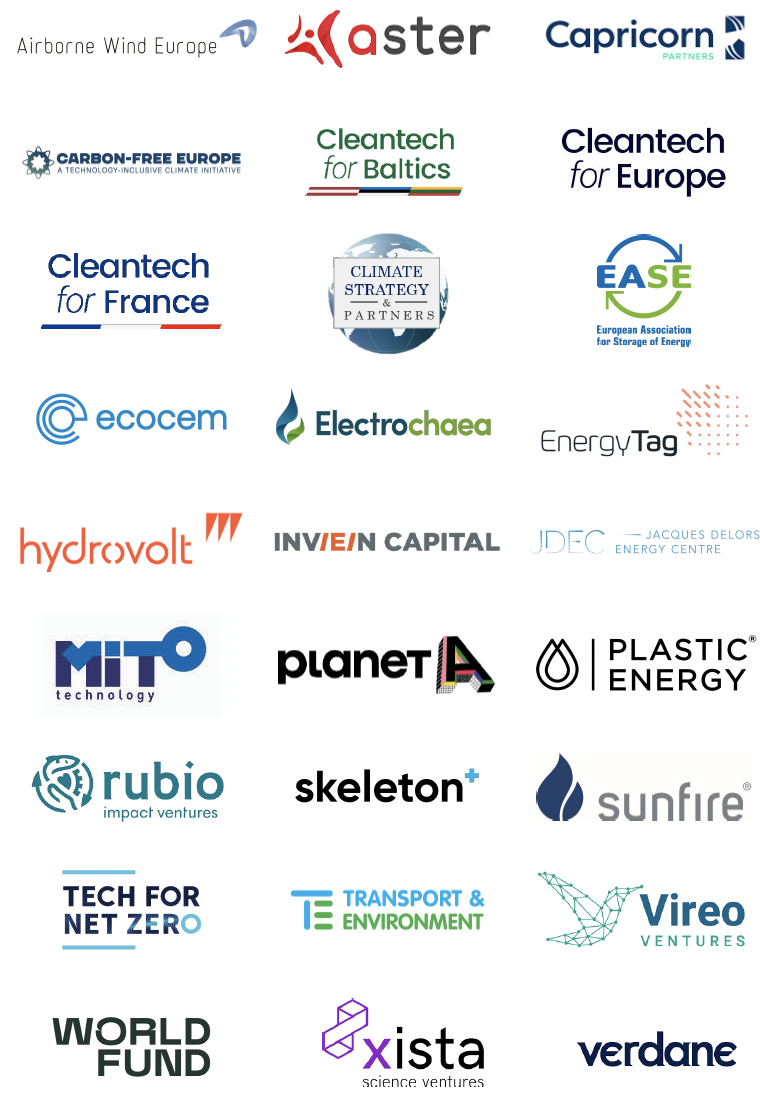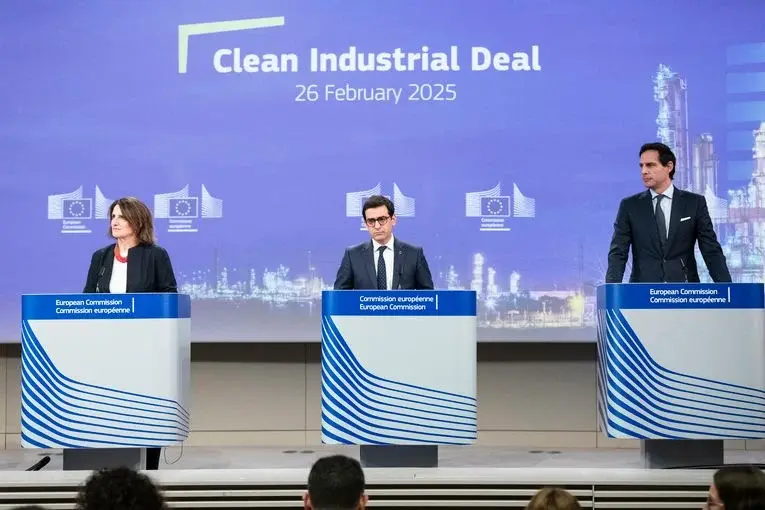China, the USA and Japan are all moving quickly to ensure they capture their share of a global cleantech manufacturing market, estimated to reach $650 billion by 20301, delivering long-term competitiveness for their economies, green jobs for their citizens, support for their climate goals, and energy security amidst unstable geopolitics. The European Union has been the world’s first-mover on climate change. Now, it needs to move faster and more assertively than its peers to stay in the cleantech race. Clearly, our future industrial and climate leadership depends on it.
To meet its ambition, this Act should remain focused on solving the critical task at hand: scaling up cleantech manufacturing in Europe. Ahead of the European Parliament plenary vote on the report November 22nd 2023, we the undersigned, a group of cleantech leaders including civil society, investors, innovators and specialists, call on Members of the European Parliament to ensure that the NZIA remains impactful and targeted to support the development of the European cleantech industry. In order to do so it is important to:
1. Give NZIA its cleantech focus back, by adopting the ENVI Committee’s approach on identifying critical manufacturing components and applying it to the original European Commission list of strategic technologies
The scope of technologies in the current ITRE report is far too broad and does not close the door on fossil-based hydrogen. Instead, the ENVI committee’s suggested approach to identify categories of critical components that need to be manufactured for each strategic technology on the list gives a level of simplicity and predictability for cleantech investors and innovators that compares better to the level of clarity of the Inflation Reduction Act.
The sharp focus of the original European Commission proposal should be preserved and not further widened to the point of losing strategic relevance, but can be enhanced by adding a list of clear components to be manufactured. This would ensure that Europe’s existing and future green industry can benefit from regulatory support to underpin European competitive sustainability. A strategic industrial policy requires focus – if everything is a priority, then nothing is.
2. Re-balance the focus between CCUS technologies and technologies that design CO2 out entirely
Currently, the NZIA report allocates disproportionate attention to CCUS technologies and creates a separate regime for them, which is not mirrored for the other strategic technologies. CCUS already receives disproportionate funding compared to replacement technologies through the EU Innovation Fund. A recent UNEP Production Gap report 2023 written by leading researchers and academic from 30 countries and backed by the United Nations highlights the risk of Governments already becoming far too reliant on CCUS is, and the uncertainties and additional risks linked to such a strategy are outlined2. The Net Zero Industry Act should seek to create a level playing field amongst the technologies on the strategic list to make sure that the European Union can indeed secure its long-term competitiveness across all technology sectors identified, not just in CCUS.
The current ITRE report proposes a strategy that could result in placing most of our future options on one dominant technology pool, which is a high-risk strategy that would steer the focus of funding for the next few years to technologies which only ’deal with the CO2’, instead of scaling up a range of technologies that ‘design-out the CO2’ from production processes (technologies which are available in the EU but that need support to reach scale).
To avoid this risk we recommend voting for Amendments 16 and 25 in the plenary vote(which create a clear procedure for establishing sectors with such residual emissions which can only be addressed through CCS).
3. Keep ambitious public procurement provisions, especially for innovative technologies reaching commercial stage.
The stronger focus on sustainability and resilience as part of non-price criteria for procurement of clean technologies is a welcome step forward. Sustainability criteria are a market-pull signal for nascent green industries, while the strengthened focus on diversification of supply chains is an important tool to limit dangerous dependencies. Finally, the increased focus on innovation will support the future of EU cleantech. These enhanced criteria should be preserved, including provisions on strengthened cybersecurity where this is appropriate.
We support the IMCO committee’s approach as it ties the qualitative aspects to the strategic importance of these projects (Amendments 1, 2 and 3 from IMCO);
4. Support the mandatory requirement to spend 25% of EU ETS revenues towards scaling cleantech manufacturing across the EU
This proposal is a start to closing the €50+ billion investment gap3 to scale strategic net-zero technologies. However, such an amendment can only truly be effective if the list is kept on strategic clean technologies and if CCUS is kept for unavoidable emissions only. In the current ITRE report, the amendment supporting this is linked to industry decarbonisation at large risks creating additional revenue streams to the same incumbents receiving free allocation under the EU ETS. The ETS revenues have to carefully be earmarked for cleantech manufacturing scale-up in line with the annual deployment needs for meeting our 2030 and future climate and energy targets;
5. The Net Zero Strategic Projects label has to boost strategic competitiveness
The amended article lists a wide range of selection criteria. The stipulation that a project may be awarded the NZSP label if any one of them is met means that many projects will qualify that do not meaningfully contribute to building a resilient manufacturing base of strategic cleantech. A return to a selection criteria closer to the Commission’s original proposal (Art. 10), with all criteria being assessed cumulatively and competing projects then awarded a score, would mean that only the best projects benefit from the NZSP label.
6. NZIA cannot become a backdoor vehicle to circumscribe non-related policy priorities
The introduction in the compromise amendments of a European Scientific Advisory Board on Review and Regulatory Burden (EABRRB), with a mandate to propose measures to lessen regulatory burden, represents a serious distortion of the NZIA, and must be removed from the text. The goal of the NZIA is to create a regulatory architecture to support European cleantech – not to undo existing mandates or create yet another level of bureaucracy adding to the complexity of the landscape.
Time is running out in this mandate to address the challenges of the cleantech race. The choice is clear: deliver an NZIA that supports the cleantech manufacturing sectors on which Europe’s future prosperity will be built, or allow it to be distorted to the point that its impact will be too thinly spread, and therefore fail its mission.









